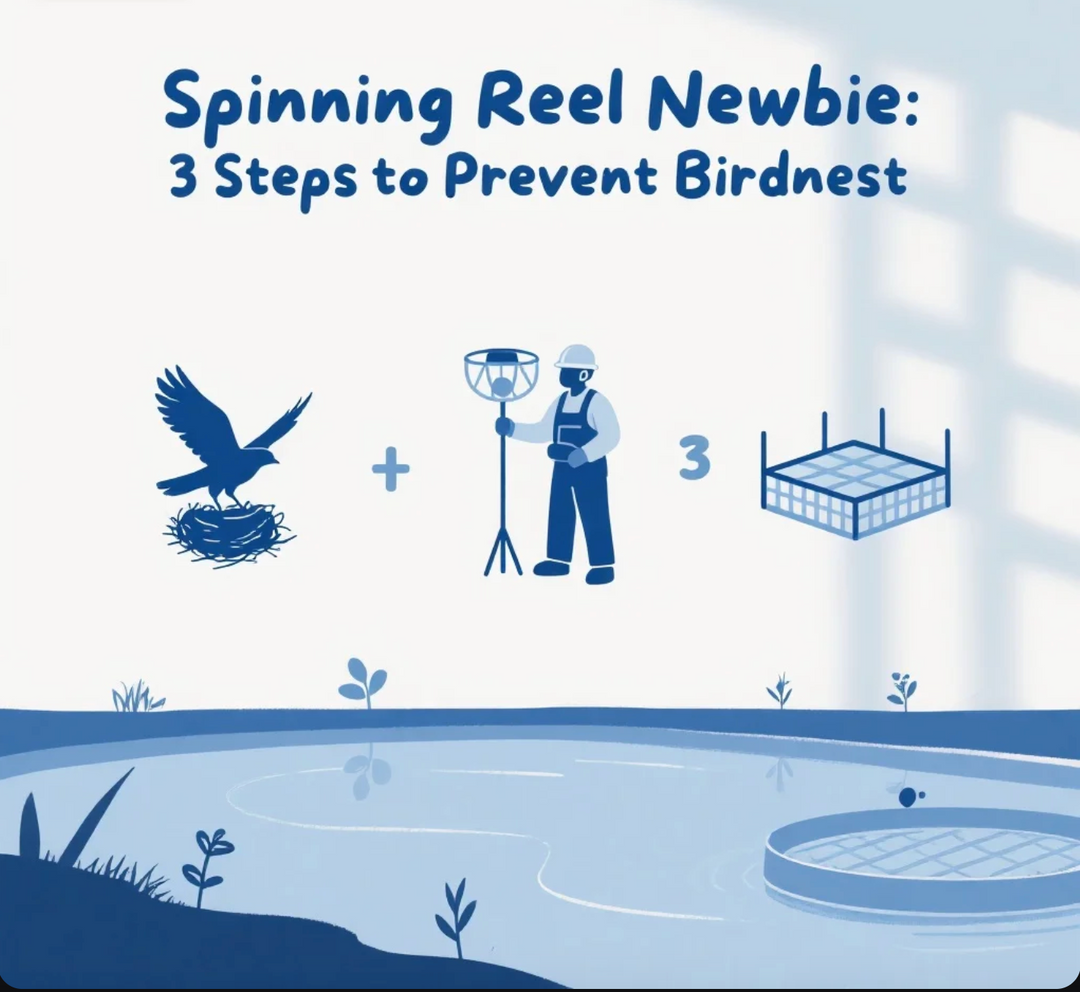Baitcast Reel for Beginners: Tame the ‘Bird’s Nest’ and Master Your Cast
For saltwater anglers and freshwater enthusiasts alike, baitcast reels offer unparalleled control and casting precision—perfect for targeting everything from bass to bonefish. But for newcomers, the thought of wrestling with a baitcaster can be intimidating, especially the dreaded “bird’s nest” (a tangled mess of line that plagues even experienced anglers). Fear not! This guide will walk you through choosing the right baitcast reel, avoiding common pitfalls, and mastering the art of smooth, accurate casts. Whether you’re fishing from the shore or a boat, these tips will help you become a baitcast reel pro in no time.
What Is a Baitcast Reel, and Why Should Beginners Care?
Unlike spinning reels, baitcast reels sit on top of the rod, with the spool parallel to the water. Their design allows for greater sensitivity to underwater strikes and more control over lure placement—critical for techniques like flipping, pitching, or targeting finicky fish in heavy cover. While they may look complex, modern baitcast reels are engineered with features like magnetic or centrifugal braking systems to make casting easier for beginners. Plus, once you master the basics, you’ll wonder how you ever fished without one!
Choosing the Right Baitcast Reel for Beginners: Key Features to Look For
Selecting your first baitcast reel doesn’t have to be overwhelming. Focus on these must-have traits to ensure a smooth learning curve:
-
Spool Size and Line Capacity:
Start with a medium-sized spool (500–800 series) for versatility. If you plan to fish in saltwater environments, opt for a reel rated for braided line (20–30 lb test) or a hybrid setup that handles both mono and braid. -
Braking System:
Look for reels with adjustable magnetic or centrifugal brakes. These systems help prevent the spool from over-spinning during casts, reducing the risk of bird’s nests. Most beginner-friendly models offer easy-to-use external brake dials. -
Drag System:
A smooth, corrosion-resistant drag is non-negotiable—especially in saltwater. Choose a reel with a drag star that allows incremental adjustments (10–20 lb max drag for most freshwater/saltwater species). -
Comfortable Grip and Ergonomics:
A lightweight reel with a contoured handle ensures less fatigue during long days on the water. Many modern baitcast reels now feature anti-reverse systems to prevent line backlashing, a common issue for new anglers.
Pro Tip: Pair your reel with a medium-heavy or heavy-action fishing rod and reel combo saltwater if targeting larger species, or a lighter rod for finesse techniques.
Mastering the Cast: Step-by-Step Basics to Avoid the ‘Bird’s Nest’
The secret to taming your baitcast reel lies in control—both of the rod and the spool. Follow these steps for a clean, consistent cast:
-
Set Up Your Line:
Thread your line through the guides, leaving 6–12 inches of tag end. For beginners, use monofilament or fluorocarbon (easier to handle than braid) until you’re comfortable with braid’s sensitivity. -
Adjust Brakes and Drag:
Start with brakes set to 70–80% (most reels have indicator marks) and drag at the lowest setting. You can tweak these as you gain experience. -
Casting Stance:
Hold the rod with your dominant hand at the reel seat, your thumb resting lightly on the spool. Your non-dominant hand should steady the rod tip. -
The Cast:
- Aim your rod tip toward the target at a 45° angle.
- With your thumb pressing gently on the spool, sweep the rod back past your shoulder, then pause briefly to let the lure settle.
- Snap the rod forward, releasing your thumb once the lure is 6–12 inches from the water. Let the weight of the lure pull the line, not your arm.
-
Recovering from a Bird’s Nest:
If the line tangles, don’t panic! Simply unwind the mess from the spool (working from the top down to avoid kinks) and check for frayed line. A small pair of scissors and a line conditioner can smooth out rough spots.
Saltwater Fishing Applications: Why Baitcast Reels Excel in Tough Conditions
From casting heavy jigs in mangrove flats to targeting tarpon in open water, baitcast reels shine in saltwater environments. Their robust construction resists corrosion, and the ability to “feather” the spool allows anglers to present lures naturally in current or windy conditions—something spinning reels struggle with. If you’re eyeing a saltwater fishing rod and reel combo, look for models labeled “all-rounder” or “heavy-duty” to handle everything from inshore flats to offshore reefs.
Best Practices for Long-Term Care
Like any tool, your baitcast reel needs regular maintenance to perform at its best:
- After each trip, rinse the reel with fresh water to remove salt, sand, or debris.
- Lubricate moving parts (spools, brakes, drag star) with reel-specific oil every 3–6 months.
- Store your reel in a cool, dry place—avoid hanging it by the handle, as this can warp the rod.
Final Words of Encouragement
Learning to use a baitcast reel takes patience, but the payoff is worth it: precise casts, improved catch rates, and the confidence that comes with mastering a classic fishing tool. Remember, every expert angler was once a beginner—so don’t be afraid to practice in shallow water or practice casts before hitting the lake or ocean. With the right reel, proper technique, and a bit of perseverance, you’ll be tackling your toughest fishing spots in no time.
Ready to take the next step? Explore our recommended baitcast reel buyer’s guide for models tailored to beginners, and start reeling in the confidence (and fish!) you’ve always wanted. Tight lines!











Leave a comment